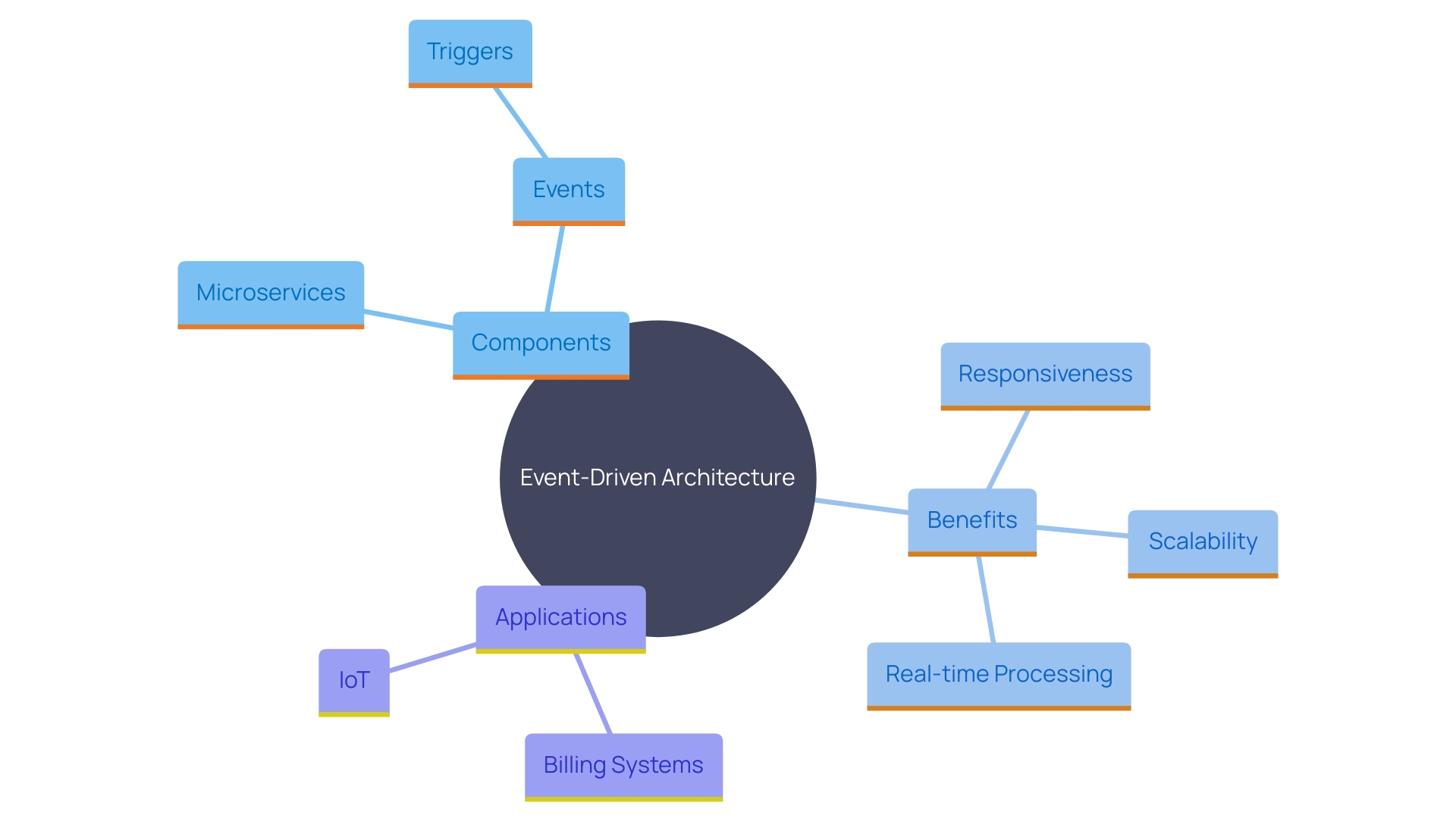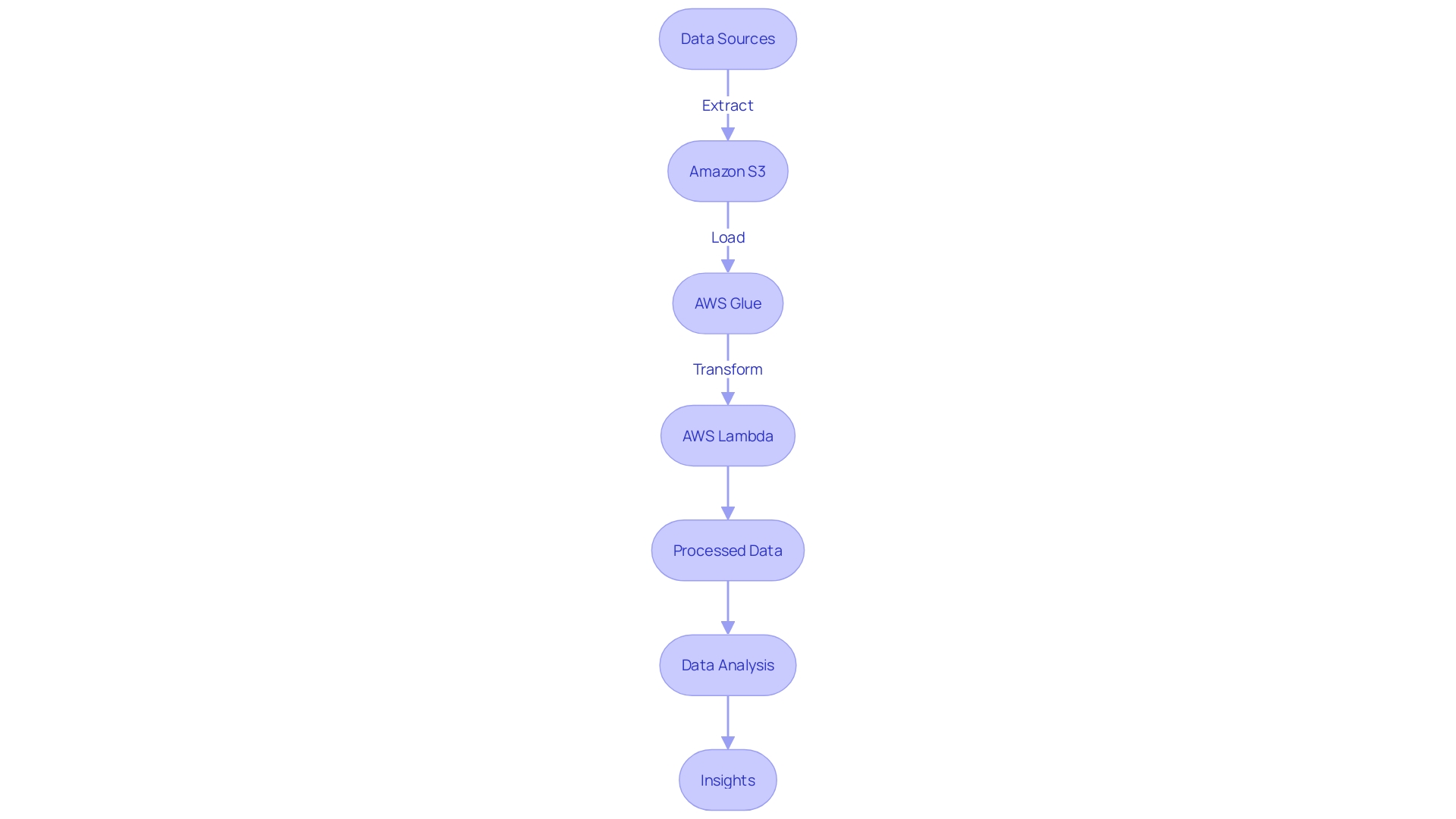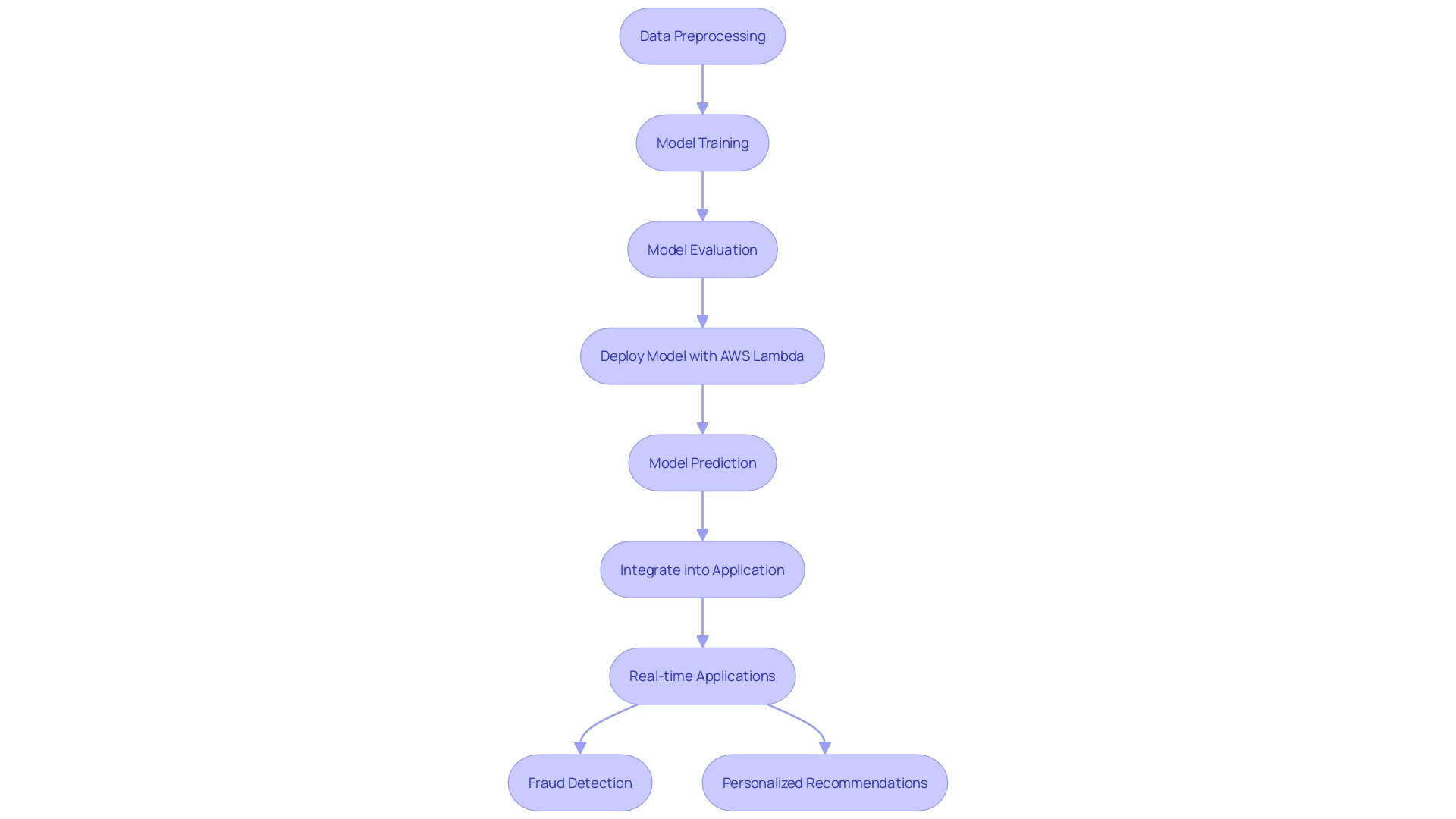Introduction
In an era where data reigns supreme and technology evolves at a breakneck pace, businesses are increasingly turning to advanced solutions to stay ahead. AWS Lambda, Amazon's event-driven, serverless computing service, stands out as a versatile tool that addresses various critical needs across industries. From real-time data processing and event-driven microservices to serverless APIs, automated backups, data transformation, and machine learning inference, AWS Lambda empowers organizations to enhance efficiency, scalability, and responsiveness.
This article delves into the multifaceted applications of AWS Lambda, highlighting its role in transforming data handling and processing. It explores how businesses leverage Lambda to streamline operations, reduce costs, and drive innovation through seamless integration with other AWS services. By examining real-world use cases and industry trends, this comprehensive overview underscores the strategic importance of serverless technologies in today's competitive landscape.
Real-Time Data Processing
'AWS functions effectively in real-time information processing, allowing applications to react immediately to incoming streams of information.'. By combining the serverless computing service with platforms such as Amazon Kinesis, organizations can manage substantial amounts of streaming information effectively. This seamless, real-time movement and processing of information is particularly advantageous for sectors such as finance and e-commerce, where swift decision-making is essential. Businesses can leverage Lambda functions to filter, transform, and analyze information as it arrives, leading to enhanced insights and timely actions.
'The rise of information streaming has become a significant trend, with 90% of the world's largest companies expected to use real-time intelligence by 2025 to enhance customer experience and key services.'. The stream processing market is also projected to grow at a compound annual growth rate (CAGR) of 21.5% from 2022 to 2028. This highlights the increasing significance and prevalence of streaming information in contemporary businesses.
In the context of AWS, the combination of Kinesis Data Streams and AWS Lambda offers a robust solution for stateful stream processing and pattern recognition. This enables systems to process each event in real-time while preserving the current condition and identifying event patterns. This capability is particularly valuable for catching anomalies and providing real-time alerts and actions.
As Dr. Werner Vogels, VP and CTO of Amazon.com, emphasizes, information is the cornerstone of every organization's digital transformation. Harnessing data to its full potential requires a strategy that can scale with customer needs and accommodate all types of use cases. Serverless technologies such as AWS and Amazon Kinesis play a crucial role in this, allowing organizations to flexibly adjust workload patterns and enhance for performance and expense.
Event-Driven Microservices
Event-driven architectures utilizing AWS Lambda enable the creation of microservices that react adaptively to different events, greatly improving responsiveness and scalability. Each microservice can be triggered by specific occurrences, such as database updates or user interactions, facilitating seamless integration and communication between diverse components. This architecture not only simplifies development but also allows for the independent scaling of services based on demand, making it optimal for dynamic and high-performing applications.
An event-driven architecture (EDA) revolves around the production, detection, consumption, and reaction to events, which are significant changes in a network's state. This approach guarantees that processes respond to events asynchronously, allowing real-time reactions without waiting for a sequential workflow. This paradigm is particularly advantageous for frameworks requiring high concurrency and responsiveness, such as real-time data processing, IoT applications, and microservices-based architectures.
For example, in a billing framework, adopting an EDA approach can ensure high accuracy by allowing various components to subscribe to and act upon relevant events in real time. This was demonstrated in a recent project where a billing system was built using EDA, addressing challenges and enhancing overall system performance.
With AWS, you can deploy microservices that automatically scale with the demand, ensuring optimal resource utilization and cost-efficiency. This makes it an ideal solution for applications where speed to market and scalability are paramount, as evidenced by numerous real-world implementations where companies have successfully leveraged EDA to overcome complex business challenges and seize new opportunities.

Serverless APIs
Utilizing AWS functions for creating serverless APIs transforms the development and management of backend services. By integrating API Gateway with serverless functions, developers can construct robust APIs that dynamically scale to accommodate varying loads, eliminating the need for server management. This architecture significantly reduces operational overhead and costs, freeing teams to focus on delivering features and enhancing user experience.
This approach aligns with the concept of 'utility computing,' where resources are metered like electricity. Serverless solutions offer unparalleled scalability and flexibility, enabling organizations to handle unexpected traffic growth seamlessly. As highlighted in the case of the National Library, leveraging serverless architecture allowed them to efficiently share digital collections globally using the IIIF standard, thereby saving bandwidth and improving resource accessibility.
Additionally, the strategic adoption of APIs has proven to drive market capitalization growth. Companies utilizing APIs saw a 12.9% surge compared to those that did not, underscoring the transformative impact on financial performance and organizational value. This trend reflects a broader acknowledgment of the vital role APIs play in enhancing workflows and connectivity across various industries.
Automated Backups and Routine Tasks
'AWS serverless computing excels in automating routine tasks, such as backups and maintenance processes, through event-driven triggers.'. By scheduling functions to execute at predetermined times or in response to specific events, organizations can ensure that critical tasks are performed consistently and reliably. This automation significantly reduces the risk of human error and frees up valuable resources for more strategic initiatives.
For instance, NUL utilized AWS functions within the IIIF standard to automate the delivery of digital collections, allowing researchers to zoom in and conduct a thorough analysis of digitized resources efficiently. 'The automation of backup and recovery procedures through AWS functions also improves resilience and security, ensuring that information is safely stored in multiple regions and prepared for restoration in case of disaster.'.
A key advantage of using AWS is its ability to integrate seamlessly with other AWS services, such as Amazon S3 for scalable storage solutions and Amazon Connect for efficient customer service operations. These integrations enable organizations to streamline their workflows, reduce manual effort, and enhance overall operational efficiency.
Data Transformation and ETL Processes
'AWS service excels in information transformation and Extract, Transform, Load (ETL) processes, making it an essential tool for organizations handling large volumes of information.'. By automating the intake and processing of information from various sources, the system converts this information into formats appropriate for thorough analysis. When combined with Amazon S3 and AWS Glue, Lambda allows businesses to optimize their pipelines, significantly improving the effectiveness of management and analytics operations.
This automation is crucial in today's data-driven landscape, where companies handle petabytes of information. Traditional manual validation processes are not only time-consuming but also prone to errors. As emphasized by AWS Solutions Architect Rushikesh Jagtap, contemporary analytics solutions must be scalable and efficient to produce valuable insights.
For instance, automated information validation frameworks like Griffin offer a streamlined approach to ensuring accuracy by comparing large datasets and identifying discrepancies. Such frameworks save valuable time and resources, allowing organizations to maintain information integrity and drive informed decision-making.
The significance of an effective information strategy is further highlighted by the integration of AI models and serverless technologies. AWS's recent innovations, including serverless database and analytics offerings, support the most demanding workloads. This enables customers to dynamically adapt their workload patterns, optimizing for both performance and cost. As Tayo Olajide, a Cloud Data Engineering generalist, states, the strength of information lies in its capacity to drive informed choices, emphasizing the necessity for strong information management solutions like AWS functions.

Machine Learning Inference
AWS serverless computing simplifies the deployment of machine learning models, enabling scalable and efficient inference. By utilizing serverless functions for data preprocessing and carrying out model predictions, organizations can incorporate advanced machine learning capabilities into their applications without the complexities of infrastructure management. This approach is particularly beneficial for applications requiring real-time predictions, such as fraud detection and personalized recommendations. For instance, the TR Labs team, which started as a small group focused on ML innovation, successfully integrated AI/ML models into their products and internal systems, enhancing efficiency and productivity. As their team grew to over 100 members, managing model development and training processes became increasingly complex. AWS Lambda's scalability and ease of integration helped them address these challenges, supporting diverse use cases while maintaining high performance.

Conclusion
AWS Lambda is a vital resource in contemporary data management, offering diverse applications that enhance operational efficiency and responsiveness. Its strengths in real-time data processing allow organizations to react swiftly to incoming data streams, improving decision-making and agility. By integrating with services like Amazon Kinesis, AWS Lambda effectively manages large volumes of data, meeting the rising demand for real-time insights.
The implementation of event-driven microservices further boosts scalability and responsiveness. This architecture ensures seamless integration and independent scaling, making AWS Lambda suitable for dynamic applications requiring high concurrency.
Moreover, AWS Lambda transforms backend service management through serverless APIs, significantly reducing operational overhead while accommodating varying traffic loads. This flexibility enhances overall organizational performance and connectivity.
The automation of routine tasks, including backups and data transformation, minimizes human error and optimizes workflows. Its seamless integration with other AWS services allows organizations to focus on strategic initiatives rather than manual processes.
In addition, AWS Lambda streamlines the deployment of machine learning models, enabling real-time predictions without the complexities of managing infrastructure.
In summary, AWS Lambda is essential for businesses navigating today's data-driven landscape. Its versatile applications reinforce the importance of serverless technologies in driving efficiency, scalability, and innovation, ultimately providing a competitive advantage.




